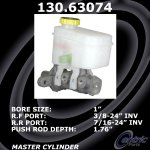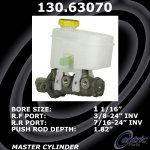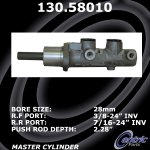I will start this post by saying one thing: if you are not looking for technical info, or really don't care how I am coming to these conclusions, you may want to stop reading now.

If you like to know the how's and why's and also that I really
am doing some in depth investigation, read on!
So I'm trying to draw (ha ha) a diagram showing the measurements that I took. I measured things such as the circle radius from hub center to the caliper mount holes on the knuckle, the distance from hub center to the outermost edge of the caliper (to find wheel clearance issues), the clearance between the inside/back of the caliper housing and the axle when at full lock, and the distance between the caliper mounting bolts, and the clearance at multiple points between the back of the rotor and the inside of the rim. For this prelim trial I just used a stock 17" Rubicon rim. You guys will LOVE the results of those measurements

1. The nice thing is that the stock rim is kinda a worst case scenario. Due to the huge backspacing of the stock rim, basically the entire caliper has to fit inside the rim. If you are running a 4-5" backspace rim like most of us with aftermarket rims on a JK have, the rear edge of the rim actually moves outward (unless you are using some huge-ass 12" wide rim) and thus the inside-most portion of the caliper is actually exposed OUTSIDE of the back of the rim. This eliminates having to even worry about caliper clearance of the back edge of the caliper.
2.
Even the factory rims allow use of a, get this, 14" rotor with the right caliper. I had mentioned this in a prior post. For example: a 2007 Dodge 2500 diesel pickup uses a massive 13.9" x 1.4" thick rotor, with a HUGE caliper...all inside a 17" rim. Our JK rims are 16.75" I.D. at the rearmost edge. At the point of tightest clearance with the outer edge of our stock calipers, the I.D. of the wheel is roughly 16.125" (radius = 8 1/16th). The Radius of the stock setup from hub center to outermost edge of the caliper is 6 19/32".
What does this mean?? This means that there is about 1.5" of clearance, using a factory rim, with terrible backspacing that covers the entire caliper. So what happens if we theoretically could swap a nice, fat, 13.9" rotor, say, similar to off a late model diesel pickup, in place? Well, with the same old stock JK caliper in place, we would have a new maximum radius of rotor plus caliper of:
6 19/32" + 1" (because 2" larger rotor = 1" bigger radius) = 7 19/32"
And guess what? This STILL FITS INSIDE A STOCK 17" RIM! The cool part is that, when comparing several calipers, the stock JK caliper is actually kinda chunky in the back side (closest to the rim). There is a square-ish knob right in the center over the piston that adds probably an unnecessary 3/8" of height.
The factory, huge, dual piston caliper off of a diesel Dodge Ram actually would give MORE clearance on the back side than our stock JK caliper.
So I restate again, and lets go up to a true 14" rotor for simplifying the numbers:
6 19/32" factory max radius of brake hardware + 1.05" rotor radius increase (to a true 14" rotor) =
7.644"
The inner diam of a factory 17" rim at the point closest to the caliper is 16 1/8" =
16.125
16.125 / 2 = rim inner radius = 8.0625"
8.0625 - 7.644 =
0.4185" clearance <-- This is plenty of clearance, and using a 14" rotor and stock (dimensionally) calipers!!!
So this means one thing: I'm gonna go as big as we can with this search. WHY?? Because the best increase in braking doesn't come from squeezing the rotor harder...it comes from braking torque. The farther away from the hub center that the caliper can squeeze (i.e. bigger rotor), then the more gross brake torque that can be applied. Same pads. Same caliper. Going to a 2" bigger diameter rotor, using the same caliper, will yield a 17% increase in braking power. Same force on the pedal. Same master cylinder. So the bigger, the better!
Combine this with a higher-flow, larger-bore master cylinder like I discussed above and now we are talking REAL braking. Oh yeah... and I didn't even mention a big fat 2-piston caliper yet!
----------------------------
So. On to rotors:
I am fairly certain now that some version of late-model Dodge ram 1500 rotors and calipers are gonna some way be adapatable to our application. This would be about a 13" rotor. The hard part with rotor hunting is all of the other dimensions: bolt pattern and rotor height are the hard things. Our Jeep JKs use a very, very shallow hat height (the center part of the rotor that looks like a soup bowl, with the hub bore in the center). This shallow hat height severely limits our choices. I found one that is promising: Mid-2000s Dodge Vipers. Yep. I said Vipers. Specifically, the rear rotors. The rotor is 13.98" diameter.
Yes!! They are a fat 1.25" thick.
Awesome! The height is less than 3mm difference than the stock JK. (This is well within the range of motion of a floating caliper)
Score!!. They are
cheap!!!!!! ($56 each, new, with free shipping to your door!) They are in stock at numerous online sources!!! The only catch: The bolt pattern. 6 on 4.5" Damn. :grayno: So I'm going to try to source the manufacturer and see if I can get undrilled blanks for this rotor. If possible, then we can drill them to either stock 5 on 5" or, like in my case, 5 on 5.5" for those running manual locking front hubs.
Let's keep our fingers crossed on this.
I will continue to research the J8 / Teraflex ~ 13" rotor setup with (likely) Dodge Ram 1500 equivalent calipers, but if I can adapt something better, just as easily... hell! Let's do it!!



